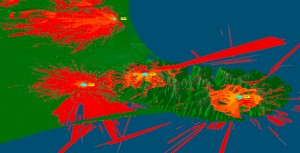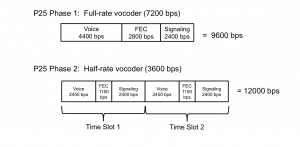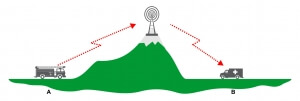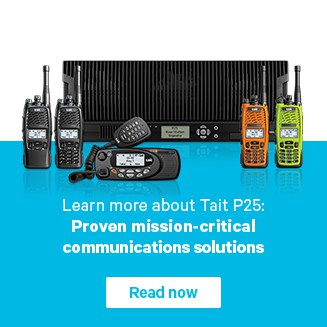Introduction to P25
P25 Network Architecture
P25 Network Overview
In this course, we’re going to look at different network configurations.
P25 is designed to meet a wide range of Public Safety operational requirements. There are two elements that should be considered for a radio system to operate successfully: coverage and capacity. Coverage is the area over which people need to communicate, and capacity is the number of simultaneous calls the system can handle. In other words, the number of independent teams that can operate on the system.
The services that the network will support, such as voice, data, encryption, etc. also need to be considered. P25 networks can be designed to meet a wide range of requirements, and are able to scale so easily due to the defined interface points between subsystems, allowing for many optional features.
P25 Standards allow Choice
This enables an agency to choose the size, scale, and feature set that they require. The way each manufacturer engineers their subsystem may be different, but they can still all work together. This is because P25 has defined interfaces between the specific paths of the system. The Common Air Interface, or CAI, defines the radio frequency interface used by portables, mobiles, and repeaters. This allows radio equipment from different manufacturers to work together.
The CAI is used on both conventional and on trunked radio systems.
In trunked radio systems, in addition to the CAI, there are standards that define how the trunked Radio Frequency SubSystem, or RFSS, should operate. These standards define the messaging between portable and mobile radios in the field and the network equipment.
This allows for different vendors of radio equipment to work together on the same network. A range of console equipment is available, and can interface to the P25 radio system. P25 conventional non-trunked radio interfaces to consoles using the digital fixed station interface, while, on trunked radio networks, the interface is called the console subsystem interface, or CSSI.
The P25 standard also defines how many advanced features such as encryption, IP data, location services, and many others can be added to the radio network. This enables options to add functionality and capabilities to the radio network while still allowing support for equipment from different vendors. The features are optional, and this provides the ability to reduce the cost by only labeling the features required on a particular network.
These defined standards and interfaces provide a great deal of flexibility to engineer a system that meets an organization’s current operational needs, and to grow and expand the network over time.
P25 can provide short range radio-to-radio communication for a small team, such as fire, ground, special event, or tactical teams. Radio-to-radio calls use the CAI, and no network infrastructure is required. Features such as encryption and data messaging are still supported. Agencies are still able to use their own P25 radios, and to increase capacity, different channels could be used for different teams. To extend coverage, a P25 repeater could be used.
P25 Repeaters
A number of companies provide P25 portable repeaters. These can be quickly set up where greater coverage is needed. All permanent repeater equipment could be installed on a hilltop or a high building with an antenna system designed to provide coverage over a specific area. P25 repeaters use the same CAI as mobiles and portables, meaning repeaters from one manufacturer can work with portables and mobiles from another manufacturer.
Again, to increase capacity, multiple repeaters could be used, one for each group. Repeaters are installed at various locations, and network together using standard IP linking. This allows calls received at one repeater, by the CAI, to be rebroadcast from multiple repeaters.
Portables and mobiles can be programmed to scan and vote automatically and identify the best repeater in any location. This network of repeaters can also connect to a dispatch console, using the same DFSI. Where necessary, capacity can be increased by installing more than one network of repeaters.
Larger P25 Networks
Where a large number of different teams operate in the same area, trunking can be used to share the same pool of available channels. A console system can connect to the trunking system, using the CSSI. Capacity can be increased by adding additional channels to the trunked system, and coverage can be increased by adding sites.
Large statewide networks can be created, and many agencies can share the same network, and, therefore, the costs. An individual agency may purchase only the subscriber units, or the mobiles and portables, and then pay a fee to access the radio network. In some cases, wide area networks can be built out of multiple RFSS subsystems, joining them together using a protocol called ISSI, or the Inter SubSystem Interface.
In summary, the exact needs of each network or system are likely to be different. Some agencies may use a mix of their own conventional channels and statewide trunked to talk groups. However, the interfaces between subsystems are defined in the P25 standards, allowing for interoperability between one manufacturer and another.
 Radio Academy
Radio Academy








